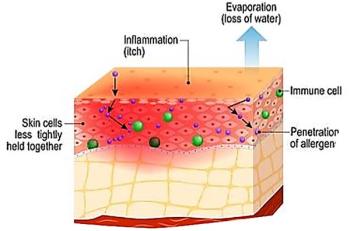
Poor Asthma Control Common Among Children
ROCHESTER, N.Y. -- Inadequate asthma control remains common among children, researchers here said.
ROCHESTER, N.Y., March 15 -- Inadequate asthma control remains common among children, even those prescribed recommended medication, researchers here said.
In a survey, only 20% of children with persistent asthma had it under optimal control, reported Jill S. Halterman, M.D., M.P.H., of the University of Rochester, and colleagues, in the March/April issue of Ambulatory Pediatrics.
Furthermore, nearly 43% of children had poorly controlled persistent asthma despite use of anti-inflammatory medication as recommended by the National Heart, Lung, and Blood Institute guidelines, they found.
The researchers analyzed parent-reported data from a 2003 telephone survey of random households in Alabama, California, Illinois, and Texas by the CDC's National Center for Health Statistics. The response rate was 48.5%.
The analysis included 975 children with persistent symptoms or daily preventive medication. This group represented 57.4% of the children with current asthma.
Persistent symptoms were defined as at least eight days with asthma symptoms in the prior month, two days with asthma-related sleeping problems in the prior month, or at least three asthma-related visits to the emergency department or urgent care center in the prior year.
Among the findings, the researchers reported:
- 37% had inadequate therapy with no preventive medication prescribed.
- 42.9% had suboptimal control despite use of preventive medication.
- 20.1% had optimal control while on preventive medication with intermittent symptoms and no more than one asthma attack in the prior three months.
Among those with suboptimal control despite preventive medication use, 39% had persistent symptoms, 46% had both persistent symptoms and more than one asthma attack in the prior three months, and 15% had intermittent symptoms and more than one asthma attack in the prior three months.
Preventive medication was primarily an inhaled steroid (76%) though some used a leukotriene modifier, mast cell inhibitor or other therapy.
In a multivariate analysis, inadequate therapy was associated with discontinuous insurance status (odds ratio 2.4, 95% confidence interval 1.4 to 4.3), black race (OR 2.0, 95% CI 1.1 to 3.5), and Hispanic ethnicity (OR 1.8, 95% CI 1.1 to 2.9).
Likewise, suboptimal control was associated with poor adherence (35%), exposure to smoke and other triggers (72.0%), and lack of a written action plan from the medical provider (52.7%).
Overall, about 72% with poor asthma control were exposed to environmental triggers and 15.5% of were exposed to tobacco smoke in the home (20.9% in the inadequate and 10.7% in the suboptimal control group). Poor office-based management was also relatively common with 57.6% not receiving a written asthma management plan, 36.2% not taught to use a peak flow meter, and 15.8% not taught to recognize symptoms.
The researchers said the study was limited by use of parental reports without objective measures of pulmonary function, medication prescriptions, or environmental exposures. Also, because the survey included only children from four states, the findings may not be nationally representative.
"Despite these limitations, our findings clearly demonstrate that a large number of children with significant asthma are not receiving optimal preventive care," Dr. Halterman and colleagues concluded.
"A newly highlighted concern is the substantial number of children who are experiencing poor symptom control despite reported use of preventive medications," they added.
The investigators said their findings were not surprising because the system of asthma care is complex.
But, they suggested that a solution may be using a multidimensional approach, "including promotion of specific screening methods to assess severity and control at office visits, provider education to enhance preventive medication prescription, and community-based work to optimize medication adherence and environmental control."
Newsletter
Enhance your clinical practice with the Patient Care newsletter, offering the latest evidence-based guidelines, diagnostic insights, and treatment strategies for primary care physicians.





















































































































































































































































































